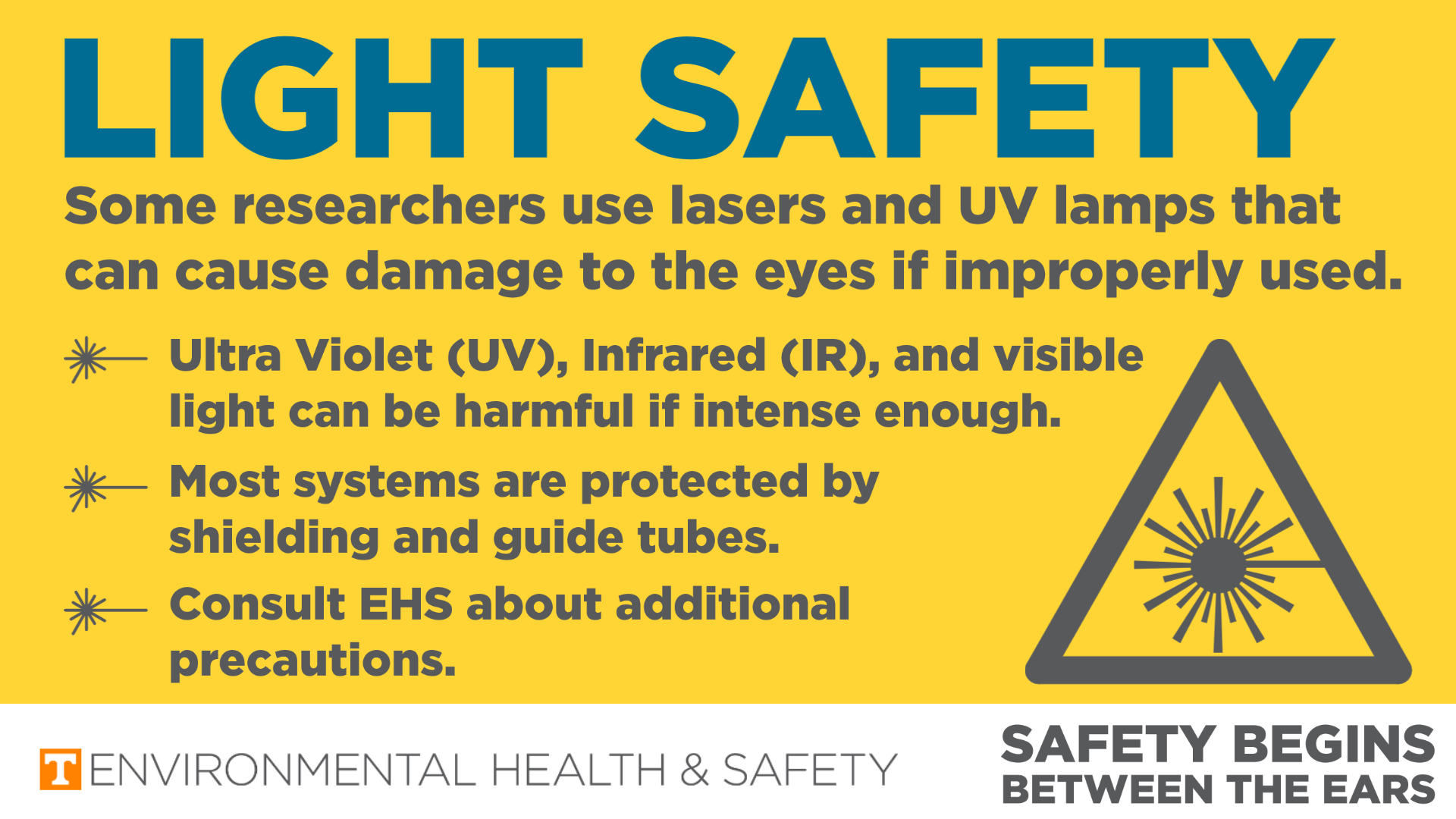While we often talk about eye safety and protection in terms of flying objects or chemical splashes, we do not want to forget the effects of intense light.The most common sources of intense light are lasers and ultra-violet (UV) lamps. Not all laser and UV sources are intense enough to be harmful, however it is important to understand the risks if you work with them.

Some researchers use lasers and UV lamps that can cause damage to the eyes if improperly used. It’s important to understand that not all of these devices are intense enough to cause harm. Those that are, are usually protected by shielding and guide tubes. These systems are designed to prevent stray light and beams from striking the eyes.
Please contact Environmental Health & Safety for more information on laser and UV safety.


 The word corrosive refers to a chemical that can cause skin corrosion or burns, eye damage, or is corrosive to metals. They can be acids, oxidizers, or bases. When they come in contact with a surface, the surface deteriorates. The deterioration can happen in seconds to minutes, such as concentrated hydrochloric acid spilled on skin; or slowly over days or years, e.g. the rusting of iron in a bridge.
The word corrosive refers to a chemical that can cause skin corrosion or burns, eye damage, or is corrosive to metals. They can be acids, oxidizers, or bases. When they come in contact with a surface, the surface deteriorates. The deterioration can happen in seconds to minutes, such as concentrated hydrochloric acid spilled on skin; or slowly over days or years, e.g. the rusting of iron in a bridge.